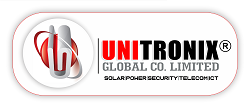PROTECTING ORGANISATIONS CRITICAL INFRASTRUCTURES TRAINING

Get Trained! Be Certified! Be Employable
PROTECTING ORGANISATIONS CRITICAL INFRASTRUCTURES TRAINING
WHAT YOU LEARN
Introduction to Critical Infrastructures Protection: Understanding the importance of critical infrastructures for organizational and national security. Identifying key sectors and assets considered critical.
Threat Landscape and Risk Assessment: Analyzing potential threats, risks, and vulnerabilities to critical infrastructures. Conducting risk assessments to prioritize protection measures. Regulations and Frameworks: Exploring relevant regulations, standards, and guidelines for critical infrastructure protection. Compliance with legal and regulatory requirements. Identifying and Mapping Critical Assets: Identifying and mapping critical assets and systems within the organization. Evaluating their interdependencies and dependencies. Security Measures and Technologies: Implementing physical security measures (access control, surveillance, perimeter security, etc.). Deploying cybersecurity technologies to protect digital assets. Incident Response and Crisis Management: Developing incident response plans and protocols for various scenarios. Coordinating responses to incidents that threaten critical infrastructures. Emergency Preparedness and Business Continuity: Ensuring preparedness for emergencies and disruptions that affect critical systems. Establishing business continuity plans to maintain essential functions. Insider Threat Prevention: Implementing measures to prevent and detect insider threats. Employee training and awareness regarding security policies. Physical Security Assessments: Conducting physical security assessments and vulnerability assessments. Identifying weaknesses and recommending improvements. Cybersecurity and Network Protection: Protecting critical digital assets from cyber threats (malware, hacking, etc.). Implementing firewalls, intrusion detection systems, encryption, and secure configurations. Supply Chain Security: Ensuring the security and integrity of supply chains for critical components. Evaluating suppliers and partners for security risks. Public-Private Partnerships and Collaboration: Collaborating with government agencies, law enforcement, and other organizations for information sharing and coordinated responses. Sharing best practices and intelligence. Training and Awareness Programs: Educating employees and stakeholders about the importance of critical infrastructure protection. Training personnel in security protocols and response procedures. Ethical and Legal Considerations: Addressing ethical considerations related to critical infrastructure protection. Balancing security measures with privacy and civil liberties. Case Studies and Real-world Examples: Analyzing real-life incidents and successful protection strategies. Learning from practical experiences and lessons learned.OUR AIM
UNITRONIX TRAINING ACADEMY (UTA) is the training arm of UNITRONIX GLOBAL CO. LIMITED; one of the fastest growing reputable RENEWABLE ENERGY companies in Nigeria. In partnership with the world’s top- rated solar modules manufacturer OEM across the world, we deliver intensive theoretical, practical and on-site installation training in solar energy. Our trainings are delivered in a conducive environment, with experienced professionals and hands-on practical sessions. Our training sessions are very interactive to ensure full understanding of all topics covered. At the end of the training, every trainee will be certified and accredited as a Unitronix Dealer for the purposes of partnership.
BENEFITS OF THIS TRAINING
- Become a certified installer/professional
- Gain employment with premier solar companies
- Engage in business partnerships and mentoring with UTA, the industry’s foremost training institution.
- Stay informed about emerging solar technologies and applications firsthand
- Achieve internationally recognized certification
- Join the UTA alumni network, unlocking exclusive benefits
- Tap into the expertise of our team of skilled engineers
- Attain membership in leading renewable energy associations

